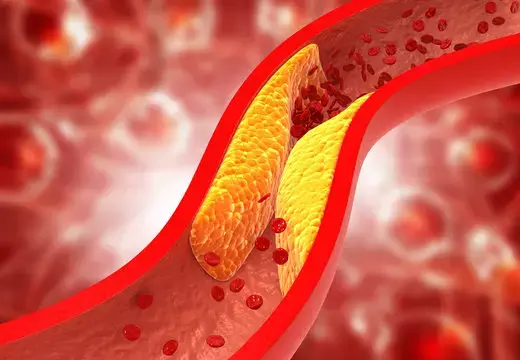- Home
- Medical news & Guidelines
- Anesthesiology
- Cardiology and CTVS
- Critical Care
- Dentistry
- Dermatology
- Diabetes and Endocrinology
- ENT
- Gastroenterology
- Medicine
- Nephrology
- Neurology
- Obstretics-Gynaecology
- Oncology
- Ophthalmology
- Orthopaedics
- Pediatrics-Neonatology
- Psychiatry
- Pulmonology
- Radiology
- Surgery
- Urology
- Laboratory Medicine
- Diet
- Nursing
- Paramedical
- Physiotherapy
- Health news
- Fact Check
- Bone Health Fact Check
- Brain Health Fact Check
- Cancer Related Fact Check
- Child Care Fact Check
- Dental and oral health fact check
- Diabetes and metabolic health fact check
- Diet and Nutrition Fact Check
- Eye and ENT Care Fact Check
- Fitness fact check
- Gut health fact check
- Heart health fact check
- Kidney health fact check
- Medical education fact check
- Men's health fact check
- Respiratory fact check
- Skin and hair care fact check
- Vaccine and Immunization fact check
- Women's health fact check
- AYUSH
- State News
- Andaman and Nicobar Islands
- Andhra Pradesh
- Arunachal Pradesh
- Assam
- Bihar
- Chandigarh
- Chattisgarh
- Dadra and Nagar Haveli
- Daman and Diu
- Delhi
- Goa
- Gujarat
- Haryana
- Himachal Pradesh
- Jammu & Kashmir
- Jharkhand
- Karnataka
- Kerala
- Ladakh
- Lakshadweep
- Madhya Pradesh
- Maharashtra
- Manipur
- Meghalaya
- Mizoram
- Nagaland
- Odisha
- Puducherry
- Punjab
- Rajasthan
- Sikkim
- Tamil Nadu
- Telangana
- Tripura
- Uttar Pradesh
- Uttrakhand
- West Bengal
- Medical Education
- Industry
Early Adult LDL-C and Non-HDL-C Levels Strongly Predict Later ASCVD Risk, suggests study

Researchers found that a single measurement of low-density lipoprotein cholesterol (LDL-C) or non-high-density lipoprotein cholesterol (non-HDL-C), if obtained during young adulthood, could strongly predict cumulative lipid exposure before age 40. These lipid exposures showed significant correlation with the risk of developing atherosclerotic cardiovascular disease (ASCVD) after age 40. A study was recently published in the Journal of the American College of Cardiology by John T.W. and colleagues.
The study evaluated the predictive value of a single measurement of non–HDL-C or LDL-C during early adulthood (ages 18-30 years) for cumulative exposure to these lipids up to age 40. In addition, the study investigated the overall association of this cumulative exposure with the risk of events related to ASCVD, such as fatal and nonfatal myocardial infarction and stroke, occurring after age 40.
This analysis was based on data from the Coronary Artery Risk Development in Young Adults study, including those participants who were free from cardiovascular disease prior to age 40 years and not on lipid-lowering medications. Of these, 3,995 had at least three lipid measurements (both LDL-C and non–HDL-C) prior to age 40 years.
In the first analysis, the investigators evaluated the strength of association of a single measurement of LDL-C or non–HDL-C obtained between ages 18 and 30 with cumulative lipid exposure from ages 18 to 40. Then they assessed the association of quartiles of cumulative lipid exposure with incidence of events related to ASCVD after age 40.
Key Findings
• This study demonstrated that a single measurement of non–HDL-C or LDL-C between age 18 and 30 had excellent discrimination for predicting cumulative exposure to these lipids over the next two decades.
• The AUCs for the four models predicting membership in the top or bottom quartiles of cumulative exposure averaged an impressive 0.93.
• Using an array of statistical models, the investigators defined specific thresholds for non–HDL-C and LDL-C that best predicted which participants would fall into the top quartile of cumulative exposure.
• In the case of non–HDL-C, levels above 135 mg/dL predicted top-quartile status, whereas levels below 107 mg/dL were associated with the bottom quartile.
• In the case of LDL-C, levels above 118 mg/dL predicted top-quartile exposure, and levels below 96 mg/dL were associated with bottom-quartile exposure.
• The top quartile of cumulative exposure to non-HDL-C and LDL-C was accompanied by a significantly increased risk of events of ASCVD after age 40.
• In fact, the HRs for events of ASCVD were 4.6 (95% CI, 2.84-7.29) and 4.0 (95% CI, 2.50-6.33) in those whose exposures were in the top quartile for non-HDL-C and LDL-C, respectively, compared with whose were in the bottom quartile.
In conclusion, the current study reveals that single measurements of either LDL-C or non-HDL-C during early adulthood serve as potent predictors of both cumulative atherogenic lipid exposure and subsequent risk of atherosclerotic cardiovascular disease after the age of 40. These findings suggest the potential for early lipid testing to be one proactive strategy toward the ultimate goal of preventing cardiovascular disease later in life.
Reference:
Wilkins, J. T., Ning, H., Allen, N. B., Zheutlin, A., Shah, N. S., Feinstein, M. J., Perak, A. M., Khan, S. S., Bhatt, A. S., Shah, R., Murthy, V., Sniderman, A., & Lloyd-Jones, D. M. (2024). Prediction of cumulative exposure to atherogenic lipids during early adulthood. Journal of the American College of Cardiology, 84(11), 961–973. https://doi.org/10.1016/j.jacc.2024.05.070
Dr Riya Dave has completed dentistry from Gujarat University in 2022. She is a dentist and accomplished medical and scientific writer known for her commitment to bridging the gap between clinical expertise and accessible healthcare information. She has been actively involved in writing blogs related to health and wellness.
Dr Kamal Kant Kohli-MBBS, DTCD- a chest specialist with more than 30 years of practice and a flair for writing clinical articles, Dr Kamal Kant Kohli joined Medical Dialogues as a Chief Editor of Medical News. Besides writing articles, as an editor, he proofreads and verifies all the medical content published on Medical Dialogues including those coming from journals, studies,medical conferences,guidelines etc. Email: drkohli@medicaldialogues.in. Contact no. 011-43720751


